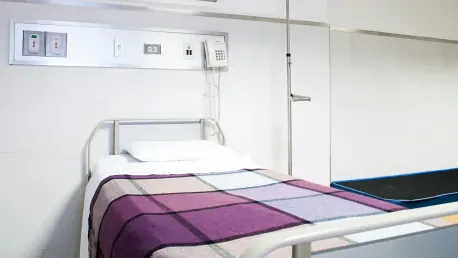How can a hospital ensure compliance and optimize patient care while navigating complex Medicare guidelines? This question has become increasingly pertinent for many healthcare institutions. Did you know that inpatient stays account for significant revenue for hospitals compared to outpatient observations? This issue is more than just a matter of semantics; it directly impacts the financial health of hospitals and the quality of care patients receive. For hospital administrators and clinical staff, understanding and mastering the intricacies of the Two-Midnight Rule is crucial.
The Importance of the Two-Midnight Rule
The Two-Midnight Rule was introduced to curtail unnecessary hospital admissions and ensure appropriate use of inpatient versus outpatient observation status. Essentially, Medicare Part A covers hospital stays only if the admitting physician expects care to span at least two midnights, provided the documentation supports this expectation. The goal behind this rule is clear, but in practice, it presents significant challenges, including claim denials and financial penalties for hospitals that fail to comply.
Hospitals today encounter numerous obstacles trying to adhere to this rule. One primary concern is avoiding claim denials through accurate documentation and proper classification of inpatient versus outpatient status. This rule greatly influences hospital admissions and subsequent reimbursements, making compliance an essential focus for maintaining financial stability and high-quality patient care.
Breaking Down Key Sections of the Rule
Inpatient Versus Outpatient Status: Determining whether a patient qualifies for inpatient admission involves specific criteria and robust documentation. Physicians must predict that the patient’s stay will be at least two midnights to justify inpatient status, which needs to be substantiated in the medical records.
Compliance Challenges: Even with clear guidelines, hospitals often face compliance issues. Common problems include insufficient documentation to support inpatient status and misunderstandings about the requirements, leading to claim denials.
Financial Implications: Proper adherence to the Two-Midnight Rule can significantly impact hospital revenue. Successful compliance ensures appropriate reimbursements and avoids financial penalties, underscoring the rule’s importance in maintaining the economic health of healthcare institutions.
Insights from Experts
Healthcare compliance experts emphasize the need for robust documentation practices to meet the Two-Midnight Rule requirements. Insights from recent research and industry professionals reveal that hospitals successfully navigating this rule often implement stringent compliance strategies and continuous education programs for their staff.
Anecdotal evidence from hospitals that have mastered the rule demonstrates the importance of detailed and precise documentation. Healthcare providers have shared instances where meticulous documentation resulted in successful reimbursements and reduced claim denials, highlighting the critical role of compliance in financial stability.
Practical Steps for Success
Documentation Tips: Hospitals can thrive under the Two-Midnight Rule by adopting accurate and timely documentation practices. Clear, concise, and detailed medical records are essential for supporting inpatient admissions and meeting compliance requirements.
Utilization Review Processes: Establishing regular utilization reviews and aligning with payer-specific guidelines helps hospitals maintain compliance. These processes ensure that each patient’s status is appropriately classified and documented.
Payer Partnerships: Building strong relationships with payers through Joint Operating Committee meetings fosters open communication and mutual understanding. Collaborative efforts can resolve compliance issues before they escalate into significant problems.
Technology Solutions: Leveraging data analytics and technology-driven tools enhances tracking and compliance efforts. These solutions provide real-time insights into claim statuses and help identify potential compliance gaps, facilitating proactive measures.
Applying Strategic Frameworks
To ensure adherence to the Two-Midnight Rule and optimize operations, hospitals should adopt a strategic framework. Continuous education programs for clinical and administrative teams ensure everyone understands and adheres to compliance requirements. Proactive measures, combined with collaborative efforts, help address challenges effectively.
By fostering a culture of compliance and leveraging technology solutions, hospitals can navigate the complexities of the Two-Midnight Rule. The strategic integration of compliance practices into daily operations is key to reducing risk and enhancing overall efficiency.
Conclusion
Successfully managing the intricacies of the Two-Midnight Rule requires hospitals to prioritize precise documentation, effective utilization reviews, and proactive compliance strategies. Educating clinical and administrative staff on evolving requirements bolsters efforts to maintain compliance while improving patient care quality. Leveraging technology and fostering collaborative partnerships with payers also contributes to financial sustainability and operational efficiency. Hospitals embracing these elements thrive, ensuring both regulatory compliance and optimal patient outcomes. Implementing these insights and strategies paves the way for ongoing success in navigating the regulatory landscape.









